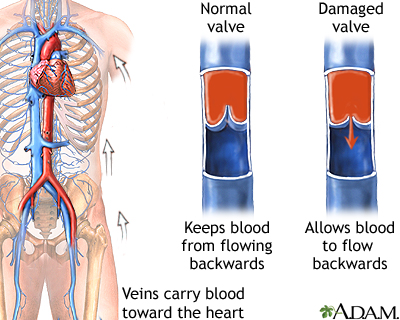How To Stop Restless Legs Immediately? (Home Remedies Included)
Sleep stubbornly refuses to come as you try to settle in for the night. You toss and turn, wrestling with the urge to move your legs. Discomfort crawls beneath your skin, and a frustrated sigh escapes your partner. You exchange a look, silently acknowledging the night of fitful sleep ahead.
This scene is all too familiar in my vascular clinic, with many patients visiting numerous specialists before finding their way to me. While poor circulation can contribute, restless legs often have a different underlying cause. By understanding the root cause of your restless legs, we can work towards ending this nightly struggle.
How Do I Know If I Have Restless Leg Syndrome?
Restless Leg Syndrome (RLS) isn't just one sensation; it's a collection of frustrating leg symptoms. Some people experience uncontrollable leg twitching, while others describe strange, hard-to-pinpoint feelings. Many patients are urged to move their legs, especially at night, constantly. In my clinic, I frequently hear descriptions of "creepy-crawly" sensations or a feeling like "water flowing up and down my legs."
Common symptoms of Restless Legs Syndrome can include but aren't limited to:
- An irresistible urge to move your legs, often accompanied by uncomfortable sensations
- Unpleasant sensations in the legs described as aching, throbbing, pulling, itching, crawling, or creeping
- Symptoms that worsen during rest or inactivity, especially in the evening or at night
- Temporary relief of symptoms with movement, such as stretching, walking, or pacing
If you’re struggling with these and other symptoms of restless leg syndrome, talk to your vascular specialist, significantly if your symptoms interrupt your ability to get a full night’s sleep.
Am I At Risk For Developing Restless Leg Syndrome?
Restless Legs Syndrome (RLS) is a condition that can affect people of all ages, including children, but it usually worsens as we age. However, it's important to note that while certain factors may increase the likelihood of experiencing RLS, they are not guaranteed triggers. The exact cause of RLS is still unknown, and scientists are actively working to uncover the underlying mechanisms. Nevertheless, some factors may enhance the risk of developing RLS:
- Genetics
- Gender
- Age
- Pregnancy
- Chronic Diseases
- Medications side effects
- Iron Deficiency
- Excessive caffeine intake
Restless Legs Syndrome (RLS) can impact individuals across various age groups; certain factors may heighten the risk of experiencing its symptoms. Genetics, gender, age, pregnancy, chronic diseases, medication side effects, iron deficiency, and excessive caffeine intake are among the factors that could potentially contribute to the development or exacerbation of RLS.
These factors do not guarantee the onset of RLS, as its exact cause is still being researched. Understanding these risk factors can aid individuals and healthcare professionals in identifying potential triggers and implementing proactive measures to manage RLS symptoms effectively.
How Can I Get Relief from RLS Symptoms At Home?
At Center for Vascular Medicine, we recommend that you complete any testing your healthcare provider recommends. During your testing, it's essential to check for vein disease.
Some lifestyle changes you can adopt to relieve symptoms of RLS include:
Proper Leg Care: Consider investing in graduated compression socks to improve daily circulation. These socks come in various styles and provide gentle pressure on your legs to help prevent symptoms. However, if you have arterial issues, avoid wearing them at night if they cause discomfort. Talk to your vascular specialist about wearing compression stockings.
Exercise: Our board-certified vascular specialists recommend engaging in low-impact aerobic activities such as walking or swimming to improve leg circulation.
Elevation: Elevate your legs to encourage blood flow back to the heart, which can help relieve symptoms caused by circulatory issues.
What Causes Restless Leg Syndrome?
Restless leg syndrome is complex and likely involves interactions between multiple factors. Research has not yet shown one singular cause for restless leg syndrome.
Restless Leg Syndrome can stem from various factors, including:
- Low iron levels
- Obesity
- Smoking
- Peripheral neuropathy
- Sleep apnea
- Diabetes
- Chronic venous insufficiency
- Pelvic Compression Syndrome
If you’re experiencing symptoms of RLS and have any of these co-occurring factors, tell your vascular specialist so they can assess your condition and risk factors.
When Should I Talk to My Vascular Specialist About Restless Leg Symptoms?
Talk to your doctor about restless legs syndrome (RLS) if you experience persistent symptoms that affect your sleep and daily activities. Some signs that it's time to discuss RLS with your doctor include:
Persistent Symptoms: If you experience uncomfortable sensations in your legs (such as tingling, crawling, or itching), it is difficult to fall or stay asleep regularly.
Frequency and Severity: If your symptoms frequently and severely impact your quality of life and daily functioning.
Sleep Disturbances: If you're experiencing significant sleep disturbances due to the urge to move your legs, which can result in daytime fatigue and impaired concentration.
Worsening Symptoms: If your symptoms worsen over time or if you notice new symptoms developing.
Medical History: If you have a family history of RLS or any underlying medical conditions (such as iron deficiency, kidney failure, or peripheral neuropathy) that may contribute to RLS.
Medication Side Effects: If you suspect your medications may exacerbate your RLS symptoms.
Impact on Mental Health: If RLS is causing distress or impacting your mental health, such as contributing to anxiety or depression.
Skin Changes or New Varicose Veins: The itching or crawling sensation could be caused by varicose veins. Tell your vascular specialist if you’ve noticed any changes to the skin or veins of your legs.
Your doctor can help diagnose RLS and develop a treatment plan tailored to your needs, including lifestyle changes, medications, or other therapies. Communicating openly with your healthcare provider about your symptoms and concerns is essential to receive appropriate care.
How Will My Doctor Diagnose Restless Leg Syndrome?
Diagnostic Tests for RLS
Diagnosing RLS is based on symptom evaluation and typically involves a combination of medical history assessment, physical examination, and, sometimes, specific tests to rule out other conditions.
Medical History: Your doctor will likely ask you questions about your symptoms, including when they occur, how often, and how severe they are. They may ask about any factors that worsen or alleviate your symptoms.
Criteria: Your doctor will use specific criteria to determine if your symptoms align with RLSs. These criteria include an urge to move the legs, usually accompanied by uncomfortable sensations in the legs, that begins or worsens during periods of rest or inactivity, is relieved by movement, and is worse in the evening or night.
Physical Examination: Your doctor may conduct a physical examination to rule out other conditions causing your symptoms. They may check for any signs of nerve damage or other underlying health issues.
Review of Medications: Certain medications can exacerbate or mimic RLS symptoms. Your doctor may review your current medications to see if any are contributing to your symptoms.
Blood Tests: Although there's no specific blood test for RLS, your doctor may order blood tests to rule out other conditions, such as iron deficiency, kidney problems, or diabetes, which can sometimes cause similar symptoms.
Sleep Study (Polysomnography): In some cases, your doctor may recommend a sleep study to evaluate your sleep patterns and rule out other sleep disorders that could be contributing to your symptoms, such as sleep apnea.
Neurological Evaluation: If your doctor suspects an underlying neurological condition, they may refer you to a neurologist for further evaluation.
Family History: Since RLS can have a genetic component, your doctor may ask about your family history of RLS or related conditions.
After ruling out other potential conditions, if your symptoms align with the diagnostic criteria for Restless Leg Syndrome (RLS), your doctor can provide a diagnosis and collaborate with you to develop an effective treatment plan. The treatment options may include making lifestyle changes, taking prescribed medications, and, in some cases, alternative therapies like massage or acupuncture.
Specialized Venous Doppler Tests
Standard venous Doppler tests may not suffice for individuals with restless legs. Specialized tests, such as reflux studies for leg veins and pelvic vein ultrasounds, are essential to evaluate blood flow patterns and structural defects in the veins. Seek out specialized vein clinics for accurate diagnosis and treatment recommendations.

How Can I Treat Restless Leg Syndrome?
If home remedies fail to provide relief and vein-related issues are confirmed, minimally invasive procedures may be necessary. Often covered by health insurance, these outpatient procedures target chronic venous insufficiency and pelvic vein compression, offering lasting relief from restless legs.
Restless Leg Syndrome Treatment with Center for Vascular Medicine
If you're experiencing restless legs, don't hesitate to seek help from qualified vein specialists. Proper diagnosis and treatment can help you overcome restless legs and enjoy restful nights again. Make an appointment online for one of our Maryland, Virginia, or New Jersey locations.

